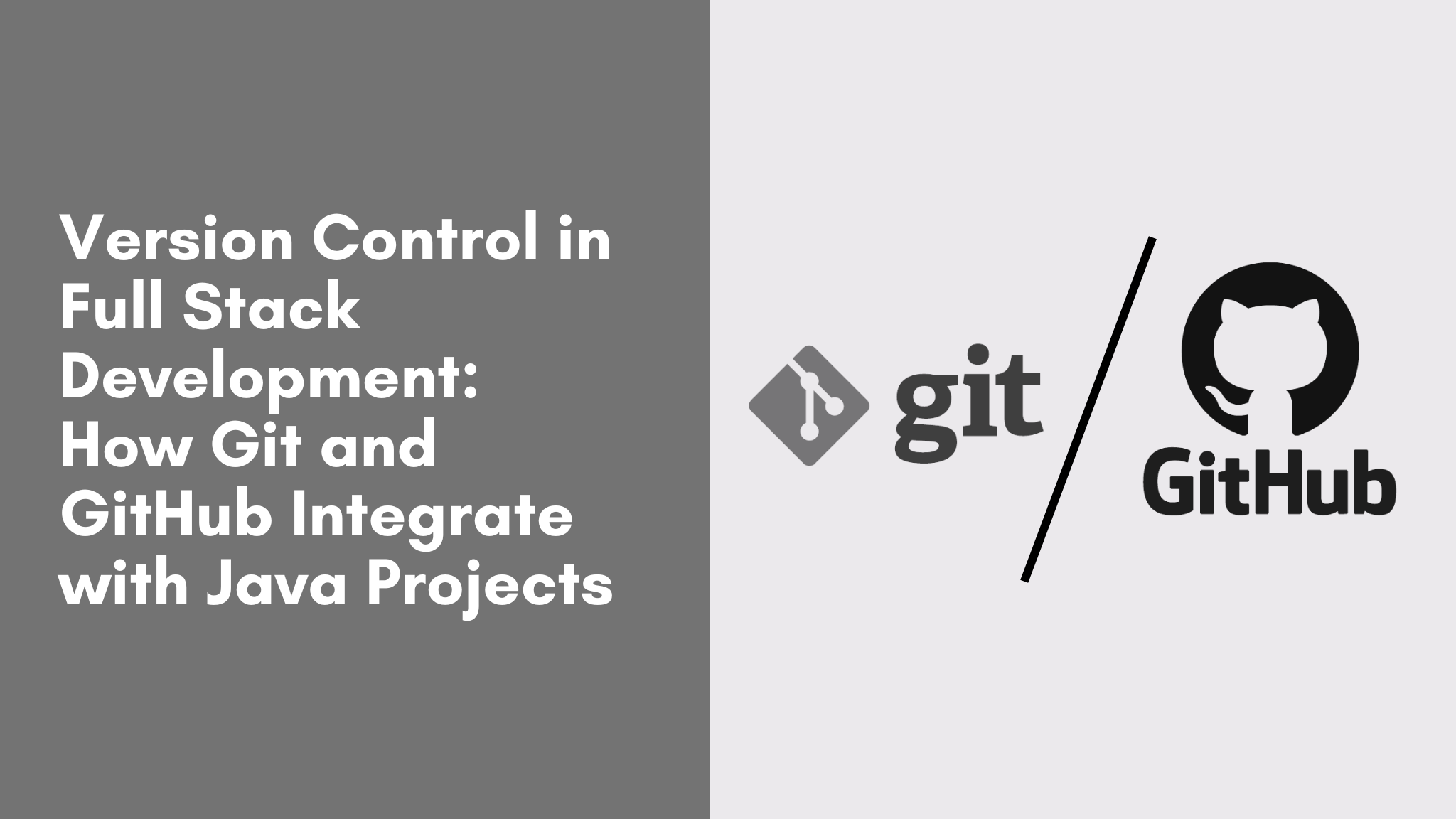Version Control in Full Stack Development: How Git and GitHub Integrate with Java Projects
 Gargi
Gargi
Version control systems play a crucial role in software development, and among the plethora of tools available, Git and GitHub stand out as industry standards, especially in the realm of full stack development. For those taking a java full stack developer course, understanding how to effectively utilize these tools is essential for managing Java projects. This article delves into the essential role of Git and GitHub in managing Java projects, demonstrating how these tools streamline collaboration, enhance code quality, and improve project management.
Understanding Version Control
Version control is a system that records changes to files over time, allowing developers to revert to specific versions when necessary. This functionality is crucial in collaborative environments, where multiple developers might work on the same project simultaneously. Version control not only tracks the history of code changes but also helps in resolving conflicts that arise when multiple contributors edit the same codebase.
Why Git?
Git is a distributed version control system that allows developers to manage and keep track of their code changes in a non-linear fashion. Unlike centralized version control systems, Git enables each developer to have a complete local repository, including the full history of changes. This architecture supports various workflows and makes it easier to experiment with new features without affecting the main codebase.
Key Features of Git
Branching and Merging
Git’s branching model enables developers to create isolated environments for new features or bug fixes, allowing multiple features to be developed concurrently without interference. Once a feature is complete, it can be merged back into the main branch, maintaining a clean and organized project history.
Distributed Nature
With Git, each developer has a local copy of the entire repository, facilitating offline work. This allows developers to commit changes locally and synchronize with the remote repository when ready, making it easier to work in various environments—an essential skill for anyone pursuing a full stack developer course in Bangalore.
Staging Area
Git’s staging area lets developers prepare changes before committing them, offering fine-grained control over what modifications are included. This ensures that only relevant changes are recorded, which is vital for maintaining a tidy project history.
Integrating GitHub into Java Projects
GitHub is a web-based platform built on Git that enhances project management, collaboration, and community engagement. It serves as a remote repository for developers to share code, track issues, and manage documentation. Here’s how GitHub improves version control in Java projects:
Collaborative Development: GitHub simplifies collaboration with features like pull requests, allowing developers to propose changes and request reviews before merging. This process promotes code reviews and improves code quality.
Issue Tracking and Project Management: GitHub’s issue tracking system enables developers to report bugs, request features, and discuss tasks. This transparency streamlines communication, helping teams prioritize tasks and manage deadlines effectively.
Continuous Integration/Continuous Deployment (CI/CD): GitHub integrates seamlessly with CI/CD tools like Jenkins and Travis CI, automating testing and deployment. This minimizes the risk of bugs in production and keeps the codebase stable.
Documentation and Wiki: GitHub offers spaces for project documentation through Markdown files and wikis. Clear documentation helps onboard new developers and provides guidance on project architecture, coding standards, and best practices.
Best Practices for Using Git and GitHub in Java Projects
Commit Often, Commit Early: Frequent commits maintain a clear project history and enable easier rollbacks. Each commit should reflect a logical change, simplifying the understanding of the codebase's evolution.
Use Descriptive Commit Messages: Clear commit messages help collaborators grasp the intent behind changes. This is crucial in Java projects, where complex logic often requires additional context.
Branch Strategically: Establish a branching strategy that aligns with your team’s workflow, such as Git Flow or feature branching. The right strategy enhances collaboration and streamlines development.
Review Pull Requests Thoroughly: Code reviews are vital for maintaining quality. Encourage constructive feedback on pull requests to foster a culture of continuous improvement.
Regularly Sync with the Remote Repository: Keeping your local repository in sync with the remote one prevents conflicts and ensures you work with the latest code. Regular syncing simplifies merging and minimizes integration issues, a key aspect for those in a full stack developer course in Bangalore.
Conclusion
In conclusion, version control through Git and GitHub is essential for successful full stack development, especially in Java projects. By leveraging these tools, developers can enhance collaboration, improve code quality, and streamline project management. As the tech landscape evolves, mastering Git and GitHub will be crucial for those pursuing a java full stack developer course. The combination of Git's robust version control and GitHub's collaborative features creates a solid foundation for managing complex Java projects and driving the success of development teams. Embracing these practices fosters accountability and transparency, equipping developers to tackle the challenges of modern software development.
Business Name: ExcelR - Full Stack Developer And Business Analyst Course in Bangalore
Address: 10, 3rd floor, Safeway Plaza, 27th Main Rd, Old Madiwala, Jay Bheema Nagar, 1st Stage, BTM 1st Stage, Bengaluru, Karnataka 560068
Phone: 07353006061
Email: enquiry@excelr.com
Subscribe to my newsletter
Read articles from Gargi directly inside your inbox. Subscribe to the newsletter, and don't miss out.
Written by
